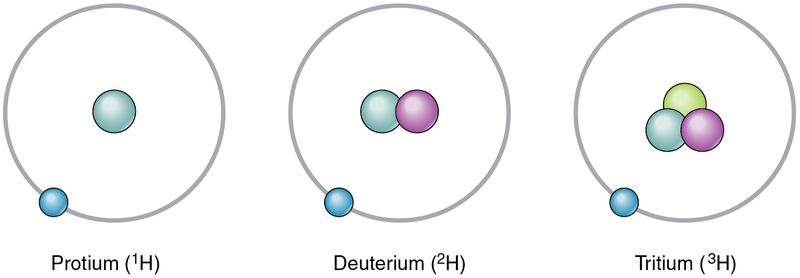10th Grade > Chemistry
PERIODIC CLASSIFICATION OF ELEMENTS MCQs
Total Questions : 54
| Page 2 of 6 pages
Answer: Option B. -> 63
:
B
When Mendeleev made the periodic table the number of elements discovered till then were 63. Rest were discovered later, and were added consecutively.
:
B
When Mendeleev made the periodic table the number of elements discovered till then were 63. Rest were discovered later, and were added consecutively.
Answer: Option B. -> 46u
:
B
The molecular formula of carbon dioxide is CO2.
Molecular mass of CO2 made from 146C=14+(16+16)=46u.
:
B
The molecular formula of carbon dioxide is CO2.
Molecular mass of CO2 made from 146C=14+(16+16)=46u.
Answer: Option A. -> X+
:
A
The elements in the 1st group of the periodic table have only one valence electron. Thus, they will tend to lose only one electron to gain the the nearest noble gas configuration.
So, valency of the elements in the 1st group of the modern periodic table is 1 and they will lose one electron to form unipositively charged ion, (A+).
:
A
The elements in the 1st group of the periodic table have only one valence electron. Thus, they will tend to lose only one electron to gain the the nearest noble gas configuration.
So, valency of the elements in the 1st group of the modern periodic table is 1 and they will lose one electron to form unipositively charged ion, (A+).
Answer: Option B. -> Lithium
:
B
Alkali metals are the elements in the 1st group of the periodic table other than hydrogen. The first alkali metal in the modern periodic table is lithium (Li).
:
B
Alkali metals are the elements in the 1st group of the periodic table other than hydrogen. The first alkali metal in the modern periodic table is lithium (Li).
Answer: Option B. -> Atomic number
:
B
Elements, when arranged in order of increasing atomic number, lead us to the classification known as the modern periodic table. The chemical and physical properties of the elements vary periodically when the elements are arranged in the order of their atomic numbers.
:
B
Elements, when arranged in order of increasing atomic number, lead us to the classification known as the modern periodic table. The chemical and physical properties of the elements vary periodically when the elements are arranged in the order of their atomic numbers.
Answer: Option C. -> Li, Na, K
:
C
According to Dobereiner's law of triads, the atomic mass of the middle element of a triad is equal to the arithmetic mean of the atomic masses of the other two elements.
Inthe triad of lithium, sodium and potassium.The atomic mass of lithium is 7 andthe atomic mass of potassium is 39. The arithmetic mean of atomic masses of lithium and potassium gives atomic mass of sodium i.e. 23.
:
C
According to Dobereiner's law of triads, the atomic mass of the middle element of a triad is equal to the arithmetic mean of the atomic masses of the other two elements.
Inthe triad of lithium, sodium and potassium.The atomic mass of lithium is 7 andthe atomic mass of potassium is 39. The arithmetic mean of atomic masses of lithium and potassium gives atomic mass of sodium i.e. 23.
Answer: Option B. -> 146
:
B
Number of neutrons = Mass No. - Atomic No.
Since 238 is the mass number,
No. of neutrons = 238 - 92 = 146
:
B
Number of neutrons = Mass No. - Atomic No.
Since 238 is the mass number,
No. of neutrons = 238 - 92 = 146
Answer: Option B. -> F
:
B
Elements try to attain the nearest noble gasconfiguration by losing or gaining electrons.
Fluorine has 7 electrons in its outer shell. These 7 electrons are bound tightly by the nucleus. It has a tendency to gain an electron to achieve the nearest noble gasconfiguration.
However,Na, Mg and Altend tolose electrons to acheive the nearest noble gasconfiguration.
:
B
Elements try to attain the nearest noble gasconfiguration by losing or gaining electrons.
Fluorine has 7 electrons in its outer shell. These 7 electrons are bound tightly by the nucleus. It has a tendency to gain an electron to achieve the nearest noble gasconfiguration.
However,Na, Mg and Altend tolose electrons to acheive the nearest noble gasconfiguration.
Answer: Option B. -> 12Mg
:
B
Alkaline earthelements are elements found in the second group of the periodic table. These elements have two valence electrons.
In the given options magnesium (Mg) is the only elementhaving two valence electrons. So itbelongs to the second group and is an alkaline earth metal.
:
B
Alkaline earthelements are elements found in the second group of the periodic table. These elements have two valence electrons.
In the given options magnesium (Mg) is the only elementhaving two valence electrons. So itbelongs to the second group and is an alkaline earth metal.

















